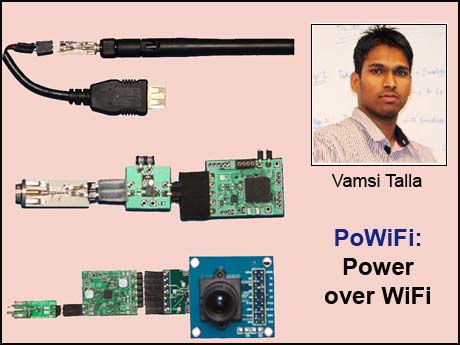
Washington State University students lead by IIT Guwahati grad, tweak WiFi routers to do double duty -- carrying data as well as power
Bangalore, June 11 2015: Sending and receiving data without wires is no big deal. We do it all the time with home and office WiFi routers. Wouldn't it be great if the same router delivered power as well?
A team at the State University of Washington's Sensor Systems Laboratory, led by doctoral student Vamsi Talla has managed to do just that -- wirelessly charging Lithium-ion batteries which are 10 metres away, as well as operating a digital camera with no other power source , than a WiFi hotspot.
Vamsi, (an alumnus of Delhi Public , Panipat Refinery and IIT Guwahati) and his team, tweaked standard routers from Asus so that the small power around 1 watt that they use to carry data is 'captured' and harvested as DC power. They call it PoWiFi -- Power over WiFi -- and there is a lot of speculation that this might be tipping point for the Internet of Things: a way to power up millions of tiny devices from health trackers to baby monitors that people already use, without needing to add a battery.
Vamsi and his co researchers who are guided by Asst Professors Shyamnath Gollakota and Joshua R Smith announced their breakthrough in a paper at the Open Access archive, arXiv.org. This has been widely hailed by the scientific community. MIT Technology Review wrote: The ability to deliver power wirelessly to a wide range of autonomous devices and sensors is hugely significant. But the real icing on the cake here is the ability to do this with ordinary technology that is commonly available all over the developed world and beyond.
Once small step by a team of students led by an Indian, may yet turn out to be a giant leap in the global quest to power a connected, intelligent world.